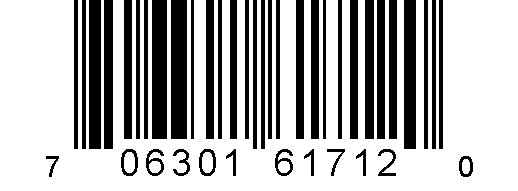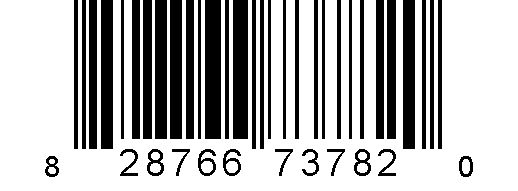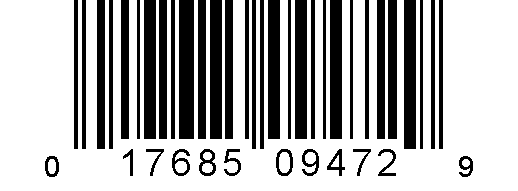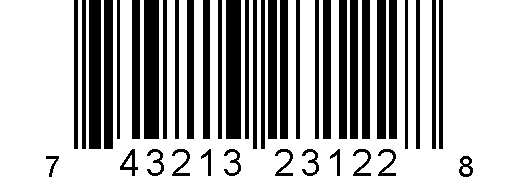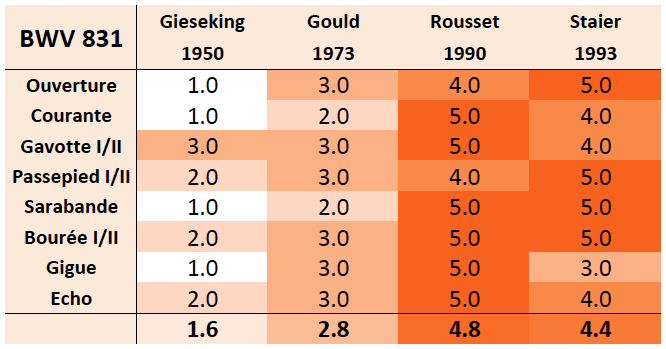Johann Sebastian Bach
Italian Concerto, BWV 971; French Overture, BWV 831,
Media Review / Listening Diary 2013-03-31
2013-03-31 — Original posting (on Blogger)
2014-11-09 — Re-posting as is (WordPress)
2016-07-12 — Brushed up for better readability
Table of Contents
Johann Sebastian Bach (1685 – 1750): Italian Concerto in F major, BWV 971
The CDs
Christophe Rousset, Harpsichord
Johann Sebastian Bach: Goldberg Variations BWV 988, Italian Concerto BWV 971, French Ouverture BWV 831, Chromatic Fantasy & Fugue BWV 903, 6 Partitas BWV 825-830, 4 Duetti BWV 802-805
Christophe Rousset, Harpsichord
Decca 475 7079 (4 CDs, stereo); ℗ 1992-95 / © 2005

Wanda Landowska, Harpsichord
Johann Sebastian Bach: Goldberg Variations, BWV 988; Chromatic Fantasy & Fugue, BWV 903; Italian Concerto, BWV 971
Wanda Landowska, Harpsichord
EMI Records / iTunes download (mono, 256 kbps); ℗ 1987, remastering 1999
(no booklet)

Ton Koopman, Harpsichord
Johann Sebastian Bach: Chromatic Fantasy & Fugue BWV 903; French Suite Nr.5, BWV 816; Ricercar from Musical Offering, BWV 1079; Toccata in G, BWV 916; Italian Concerto, BWV 971
Ton Koopman, Harpsichord
Erato 0630-16171-2 (CD, stereo); ℗ 1992

Andreas Staier, Harpsichord
Johann Sebastian Bach: Fantasias & Fugues BWV 894, 901-903, 904, 906, 917, 919, 921-922; Clavier-Übung I & II (6 Partitas BWV 825-830, Italian Concerto, BWV 971, French Overture BWV 831)
Andreas Staier, Harpsichord
harmonia mundi / BMG classics 82876 67378 2 (4 CDs, stereo); ℗ 1989-1994 / © 2005

Walter Gieseking, Piano
Johann Sebastian Bach: Six Partitas and other keyboard works
Partitas BWV 825-830; English Suite #6 BWV 911; Fantasy & Fugue BWV 906 & BWV 944; Toccata BWV 911; French Overture BWV 831; Italian Concerto BWV 971
Walter Gieseking, Piano
Music & Arts CD 947 (2 CDs, mono); ℗ 1996 / © 2005

Gustav Leonhardt, Harpsichord
Johann Sebastian Bach: Goldberg Variations BWV 988, Italian Concerto, BWV 971
Gustav Leonhardt, Harpsichord
harmonia mundi / BMG classics 74321 32312 2 (CD, stereo); ℗ 1978-1995 / © 1995

Comments
The presence of Bach’s Italian Concerto (Concerto in the Italian Style) in F major, BWV 971, gave me a chance to review various recordings of that composition in my collection. My remarks are in the order of ascending rating:
Walter Gieseking (1895 – 1956)
Back in the LP days, I knew Walter Gieseking primarily from his Bach and Mozart recordings. He recorded pretty much all keyboard works of these composers.
A Memory Phenomenon
Gieseking was quite a phenomenon: a pianist with a huge repertoire from baroque to early 20th century music. He had a photographic memory. This enabled him to memorize and instantly play the most complex compositions by reading through the score once (e.g., in an airplane), or even just by listening to somebody playing a piece. And all this without any conscious effort. That sounds very useful, but it may just as well turn into a chore!
Gieseking and the Harpsichord
The other things that come to mind when I think about Gieseking are his derogatory remarks about the “chirping and rattling” of harpsichords (which he can’t stand), and (politically certainly incorrect) the harpsichord being a women’s instrument (clearly aimed at prominent players such as Wanda Landowska, Rosalyn Turek, and maybe Zuzana Ružičková & others). Then there’s the remarks that Artur Rubinstein dropped in his autobiography about Gieseking’s political opinions & statements during WWII: in contrast to others who avoided the topic in public and perhaps cooperated silently (and maybe naïvely), Gieseking was — when talking to Rubinstein, at least — very adamant in his support for the Nazi regime (which obviously ended his conversation with Rubinstein).
Recordings
Now, how about his playing? From the liner notes to his LPs I know that he used to hold recording sessions with his class attending. He just sat down and played, say, the 6 Partitas, all in one single session, just off his memory. Essentially without any preparation and without any amending. The attendees reported that during recordings his playing tended to be faster than usual. All I have is his recordings, and I don’t know how he played in concerts. My comment only applies to what remains of his playing in published recordings.
Interpretation
In this recording (which Gieseking made in 1940), in the first movement, Gieseking plays fast (definitely the fastest here). His playing is transparent, relatively clear, and he does not exaggerate the dynamics. But there are many rushed passages, and the articulation (especially in ornaments) is often superficial. In the slow movement, on the other hand, he is slower than all others: the counting is in quavers rather than in quarter notes. He makes the ornaments appear as melody, and the melody voice is too dominant. That’s not quite the spirit of this movement, as one would expect. In the last movement (Presto), he rushes even more than in the first one, and often he is again superficial. But OK, it’s in alla breve measures, and it’s a Presto on the piano: one can’t quite compare this to Presto playing on a harpsichord.
Wanda Landowska (1879 – 1959)
She recorded this composition in 1933; for general remarks about her playing and her instrument see my short review on the Chromatic Fantasy & Fugue BWV 903.
In retrospect, her interpretation may sound horrible. She is using all the extra features and sound colors in her instruments (register / lute stop switches amidst a movement, using the seven pedals on her Pleyel instrument, ultra fast trills without much — if any — differentiation, extreme ritardandi at the end of a movement, etc.). But that interpretation must be seen in view of the possibilities and knowledge that she had at her hands at the time of the recording. Then, I think, this is still a valuable historic document. The slow movement sounds as if it were in 6/8 time, ornaments appear as melody; in the final movement she takes register changes (and the final ritardando) to the extreme. Not to compare with newer recordings, but (to me, at least) still interesting & fun to listen to!
Gustav Leonhardt (1928 – 2012)
Gustav Leonhardt recorded the Italian Concerto in September 1965, on a harpsichord by Martin Skowroneck, Bremen. It’s a replica after an instrument by J.D. Dulcken, Anvers, 1745. Other recordings by Leonhardt from that time mention an instrument built 1962/63: this is possibly the instrument played here as well. I’m sure this was a decent, most likely an excellent replica for its time, probably superior to most harpsichords available back in 1965? In any case, the harpsichord on this recording sadly sounds (it’s most irritating to state this!) suspiciously like — reasonable harpsichords in the mid-60s, and (strangely) the tuning is at a’=440 Hz (just like Landowska’s, and of course as with Gieseking’s concert grand).
Sure: it’s not like those horrible instruments with wound steel strings etc. — but still: the sound is rather metallic, with an excess of harmonics. Given that this is a concert “in the Italian gusto”, I dearly miss the warm, plucked sound of an Italian harpsichord! On the other hand, I may be asking for too much: that composition was clearly not written for an Italian, single keyboard harpsichord, but for an instrument with two manuals. The “Italian” refers to the stile of the composition, not to the type of instrument to be used. Overall, I think, the main reason for the poor sound of this CD is in the recording & microphone technique at that time, and in the inexperience of the technicians with harpsichord recordings. I’m 100% sure that Leonhardt’s playing sounded much better than this CD!
Interpretation
Yes, it’s an early recording. In later years, Leonhardt’s interpretations were more differentiated. It could also be that BWV 971 was not his favorite composition by Bach: I don’t think he played this very often. Why would I say this? There’s Leonhardt’s careful phrasing and articulation — but in the first movement, there are these completely uniform trills which would now be played in a more differentiated way. In the second movement, the lute stop in the accompanying voices (is it a 4′ stop, or a 8? lute stop coupled with 4′?) sounds rather odd, still metallic. Despite this, the melody is played with Leonhardt’s careful, differentiated articulation and phrasing.
The tempo in the last movement is clearly the slowest in this comparison — in favor of differentiated phrasing and articulation. I miss some of the vitality and the temperament of a “real” Italian concerto. Overall, this recording can hardly compete with the newer interpretations — but by and large this is not Leonhardt’s fault!
Andreas Staier (*1955)
Andreas Staier plays a harpsichord built 1982 by Keith Hill, Grand Rapids, Michigan, USA, “after German models from around 1740”. The recording was made in 1993. In the outer movements, Staier plays fast, virtuosic (not as fast as Gieseking, though!).
In the first movement, the differentiation between piano and forte is subtle (just switching between the two 8′ stops); the slow movement is audibly in 3/4 measures (not 6/8), the focus is on the richly ornamented melody voice. The last movement is again fast, with some extra ornaments, but somewhat less differentiated than Koopman and Rousset in the articulation. Also, the sound on the instrument can’t quite match that of Rousset’s historic instrument.
This and the two recordings below are all made with a tuning of a’=415 Hz (the above three were using a’=440 Hz).
Ton Koopman (*1944)
Ton Koopman recorded this composition in 1986, on his favorite harpsichord, an instrument built 1978 by Willem Kroesbergen, Utrecht NL, after Ruckers (2 x 8′ and one 4′ stop). Koopman’s playing is rich in articulation and subtle agogics, with lovely additional ornaments, and with trills that are artfully accelerating while of course the left hand remains independent. The only thing that one could maybe criticize is an occasional tendency for very slight rushing — but not to a degree that would really irritate.
The slow movement is the slowest among the harpsichord recordings. Amazingly, Koopman still manages to make this sound like a very slow 3/4 rather than 6/8 — though this 3/4 is definitely no longer Andante (the Andante is in the eighths in the accompaniment). In compensation for the slow tempo one is rewarded with very rich articulation, ornamentation, phrasing, etc. — wonderful! The last movement is vivid, with a good, “natural” tempo, and again with rich articulation and extra ornamentation.
Christophe Rousset (*1961)
Christophe Rousset plays a historic harpsichord, built 1751 by Henri Hemsch in Paris (2 x 8′ and one 4′ stop). I like his interpretation just as much as Koopman’s — even though it is quite different. In the first movement, Rousset uses almost exactly the same tempo as Leonhardt, and his playing is just as differentiated in articulation and phrasing. But thanks to the recording technique and the qualities of the instrument, this recording sounds very well-balanced, with a warm, full sound. The instrument is just marvelous in its sound qualities.
The dynamic differentiation is subtle (just the two 8′ against each other). In the slow movement. Rousset plays the accompaniment is done with a single 8′ with lute stop. This allows the melody line (single 8′) to flourish with its rich ornamentation, with detailed phrasing & articulation, clearly played as 3/4 (as written), slightly closer to the text than Koopman. The last movement is fast, but very differentiated in the articulation. The sound of the instrument is again very even, well equilibrated. An excellent recording, simply put — and less peculiar than Koopman’s, for sure.
Comparison Table
The table above shows the track durations in seconds, as well as the (relative) rating for the recordings discussed in this section.
Johann Sebastian Bach: Partita in B minor, BWV 831, “French Overture”
The presence of Bach’s “Overture in the French Style” (Partita in B minor, BWV 831) in Christophe Rousset’s CD collection with composition by Johann Sebastian Bach triggered a short review of four versions of that recording in the above CD collections, with Walter Gieseking, Andreas Staier and Christophe Rousset (see above for details), in addition, that composition is included in Glenn Gould‘s recording of Bach’s French Suites:
CD: Glenn Gould, Piano
Johann Sebastian Bach: French Suites BWV 812 – 817, Overture in the French Style BWV 831
Glenn Gould, Piano
Sony Classical SM2K 52 609 (2 CDs, stereo); ℗ 1973/74 / © 1994

Comments
Here are my comments on the four interpretations:
Walter Gieseking (1895 – 1956)
Gieseking recorded the six Partitas BWV 825 – 830 by Bach and this Partita in 1950. As much as he may have been praised for his many interpretations and recordings of baroque compositions — I don’t think they were his strength, and they definitely can’t compete now, 63 years later: a piano student would not even be admitted to the exams for a teaching diploma with such playing: his articulation is superficial, if not careless, there are many rushed passages, appoggiaturas are consistently played as acciaccaturas, short note values are often almost “swallowed”.
Overall duration: 18’21”; with very few exceptions (indicated) he plays no repetitions at all.
Notes on the Movements
- Ouverture (5’18”): this interpretation lacks all of the greatness in attitude in the introduction of a typical, baroque French Overture (see also above); the characteristics of the subsequent fast(er), polyphonic / fugato part is not that much “off the track”, but still sounds careless in articulation, overall.
- Courante (0’49”): the rhythmic structure (3/2 bars) is barely audible, the movement lacks all dance character — even though the tempo is relatively fast.
- Gavotte I / II / I (2’47”, repeats: both / both / none): no differentiation in the ornamentation, sounds careless — but still, this is maybe the best movement in this interpretation.
- Passepied I / II / I (2’08”, repeats: first only / both / none): the first Passepied is somewhat stiff; with equal temperament tuning, the second Passepied in B major lacks all sharpness, is far too moderate.
- Sarabande (1’30”): even though Gieseking plays in eighths (rather than 3/4): this is Andante, not a Sarabande (at Bach’s time a slow dance movement). The artist misses the character of the piece.
- Bourrée I / II / I (2’02”, repeats: both / both / none): often rushed, the ornamentation is superficial, the second Bourrée much too fast.
- Gigue (1’03”): all appoggiaturas, mordents, etc. are extremely short and superficial, lacking all differentiation.
- Echo (2’48”, both repeats): the articulation is superficial, the use of arpeggio arbitrary, the character of the movement otherwise is OK.
Glenn Gould (1932 – 1982)
Gould recorded the French Suites BWV 812 – 817 by Bach, and this Partita in 1970.
Overall duration: 25’07”; he consequently plays first repetitions only (except for the da capo in the Gavottes, Passepieds, and the Bourrées, where he plays no repeats).
Notes on the Movements
- Ouverture (9’49”): In the introduction, Gould is very (too) slow, the piece entirely lacks the character of a French Overture, no double punctuation / over-punctuation at all — to the contrary: he “over-pronounces” / overexposes the ornaments. This misses the character of the piece. The fugato part is definitely much better, though, with careful, detailed articulation (though often with dynamic differentiation that was not in the scope of a harpsichord).
- Courante (3’28”): this is not a Courante — in lieu of a (relatively) fast, joyful dance movement in 3/2 bars, Gould plays what could be as a moderato in 12/8 measures, maybe in 6/4. Gould entirely loses the rhythmic structure at this tempo. Maybe an interesting study by the artist, but it does not fit the character of the movement.
- Gavotte I / II / I (1’52”): better than Gieseking, overall.
- Passepied I / II / I (1’39”): much better than Gieseking, though of course, the second Passepied in B major is again way too “tamed” on the piano.
- Sarabande (1’47”): played in 3/4, but still Andante at least, lacking the slow, solemn character of a Sarabande
- Bourrée I / II / I (2’31”): for a dance movement, the first Bourrée is rather rigid; there second Bourrée is not lyrical, and not really piano, as annotated explicitly — but Gould does manage to approach the harpsichord sound in the concert grand.
- Gigue (2’10”): careful, thoughtful playing, but lacks a lot of the Gigue character.
- Echo (1’56”): completely ignores Bach’s explicit echo notation (piano / forte, spelled out); at best, Gould achieves a (slight) echo effect through articulation. For the most part, Gould focuses on articulation and analyzing the polyphonic structure.
Christophe Rousset (*1961)
Rousset (see above for notes on the instrument) made this recording in 1990.
Overall duration: 32’45”; he consequently plays all repeats, including the da capo with the Gavottes, Passepieds, and Bourrées.
Notes on the Movements
- Ouverture (11’50”): The sound of Rousset’s historic harpsichord is softer, slightly smoother (if a harpsichord can be smooth at all!) than Staier’s replica instrument. Very detailed, careful articulation in the fugato part. Rousset of course observes the piano and forte annotations. However, there is slightly less differentiation than with Staier, but Rousset also differentiates by using legato articulation.
- Courante (2’29”): more detailed and careful in the articulation and ornamentation than Staier — and I love the warm sound of that harpsichord!
- Gavotte I / II / I (3’25”): more “French” than Staier in the sound, softer. The two Gavottes are a nicely matching pair, even though their character is fairly different.
- Passepied I / II / I (2’46”): Very good — and excellent, how the second Passepied exposes the sharp harmonies of B major in baroque harpsichord tuning — that’s miles away from anything a modern piano can do!
- Sarabande (3’46”): again softer than Staier, fluent, quiet, contemplative, with very nice and careful articulation.
- Bourrée I / II / I (2’59”): again more detail, more careful, “speaking” articulation than Staier. The second Bourrée is maybe slightly closer to the first one than with Staier, but still clearly differentiated through the use of a single, soft 8′, and legato articulation.
- Gigue (2’18”): Much better in the appoggiaturas than Staier — excellent, overall!
- Echo (3’15”): very good — it is sufficient to differentiate the piano echoes by articulation and registration!
Andreas Staier (*1955)
Staier (see above for notes on the instrument)made the recordings in this Bach collection in 1993.
Overall duration: 30’40”; he consequently plays all repeats, except for the da capo with the Gavottes, Passepieds, and Bourrées.
Notes on the Movements
- Ouverture (11’39”): clearer, more structured than Rousset. There is more differentiation between the introduction and the fugato part, as well as within the fast part. In the latter, Staier plays the interludes with a single, soft 8′ register only (with the lute stop). Lively, vivid — and solemn, almost pompous in the introduction and its recurrence at the end of the movement: excellent!
- Courante (2’44”): maybe a bit on the slow side for a Courante — but Staier plays it in 3/2, as written (though one cannot possibly play this in fast half-note values)
- Gavotte I / II / I (2’59”): sometimes slightly coarse, “German” (!); the second Gavotte is piano, as written (again with the lute register); I like this more than the first Gavotte.
- Passepied I / II / I (2’10”): a wild dance movement — very good, with the second Passepied again played piano and soft; the tuning sounds more equal than with Christophe Rousset.
- Sarabande (3’43”): the sound has less harmonics than with Christophe Rousset; solemn, warm, somewhat melancholic, with nice ornamentation: very nice!
- Bourrée I / II / I (2’20”): excellent articulation, fast, vivid; the pianist observes the p in the second Bourrée, of course: this movement is fast, fluent, featuring very nice harpsichord sound!
- Gigue (2’24”): that’s the weakest movement in this performance; to me, most appoggiaturas appear as accacciaturas (not consequently, though). Some of the fast passages / ornaments are superficial, rushed.
- Echo (2’45”): I don’t quite understand why the artist detaches the echo motifs rhythmically. This unnecessarily disrupts the flow. The piano parts are differentiated enough through the use of a soft register. In the forte parts, this is often slightly coarse.
Comparison Table
The table below shows my rating for the above interpretations:
Listening Diary Posts, Overview







